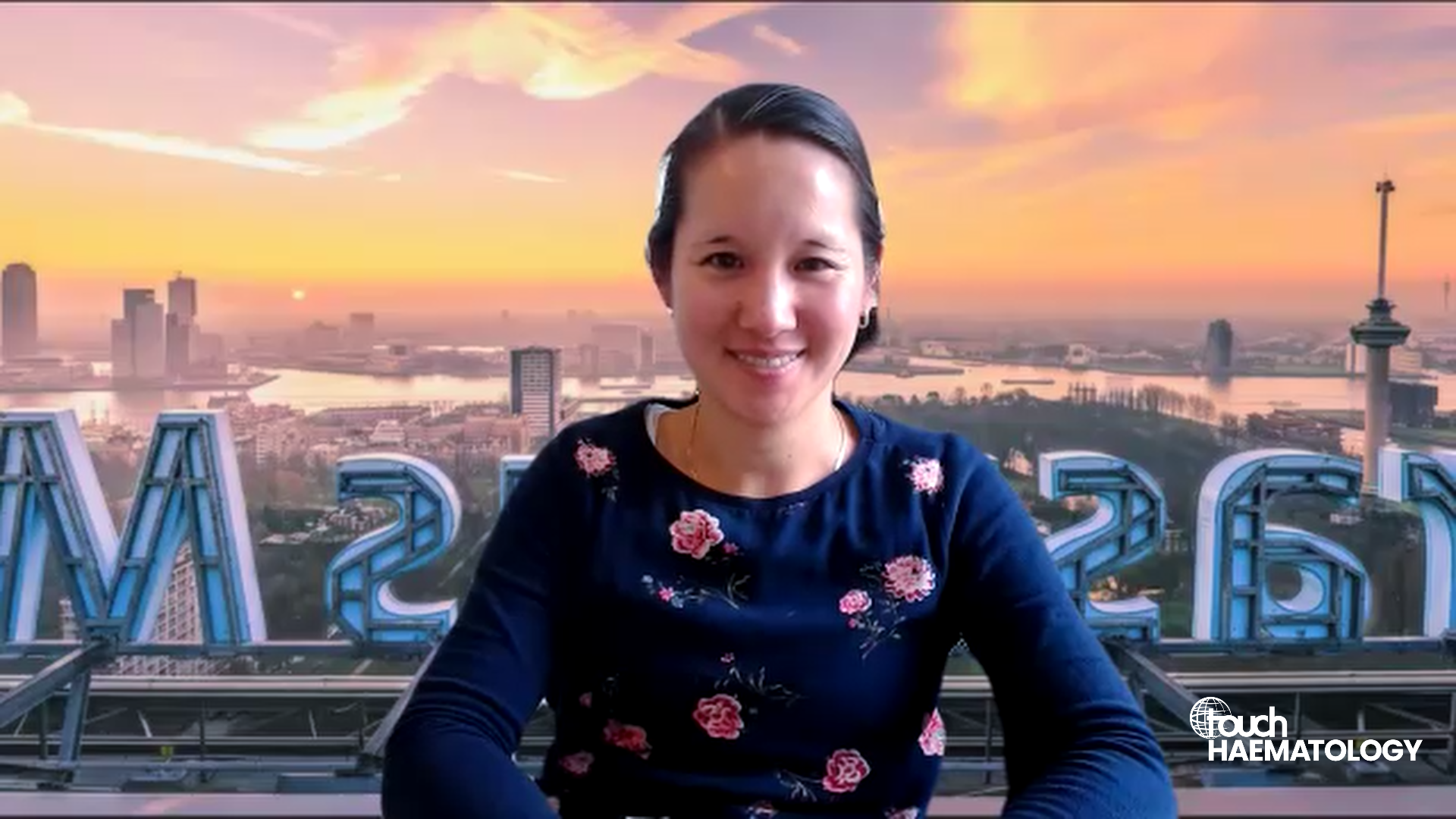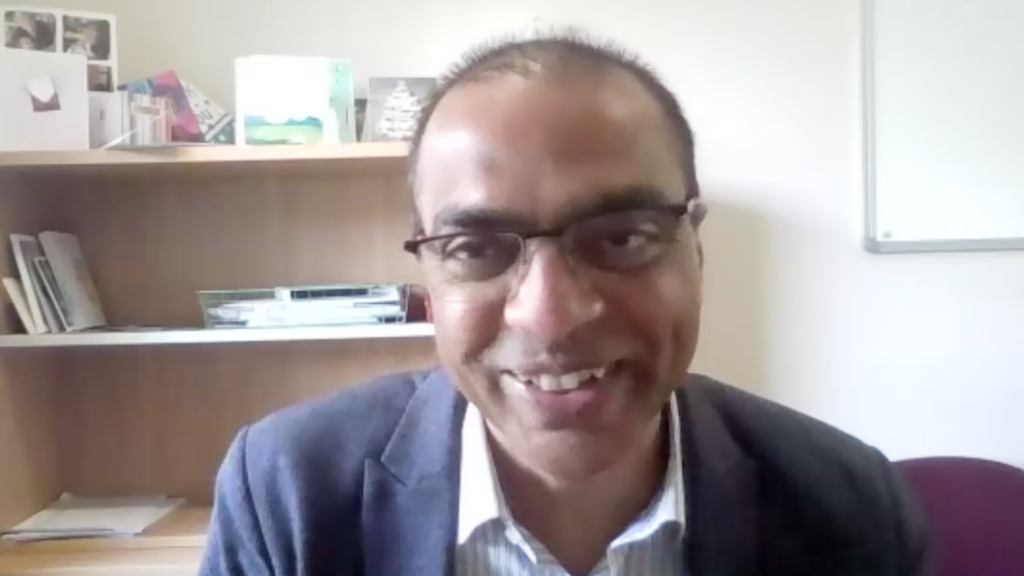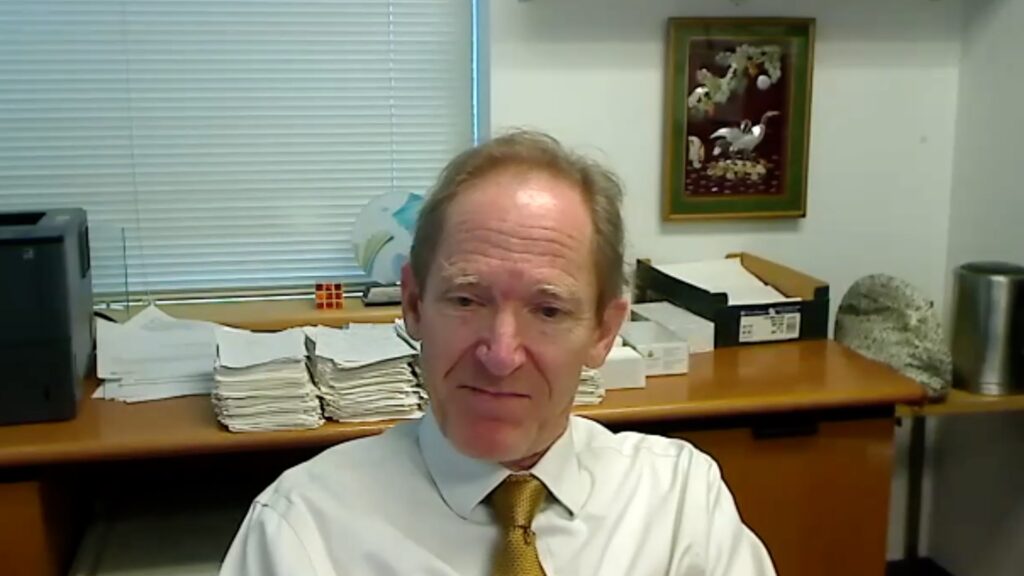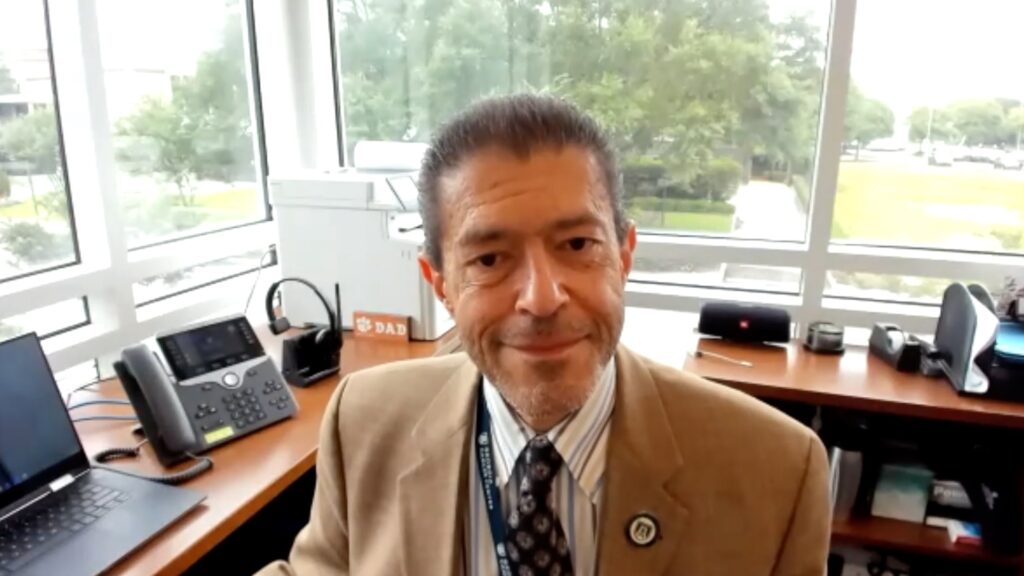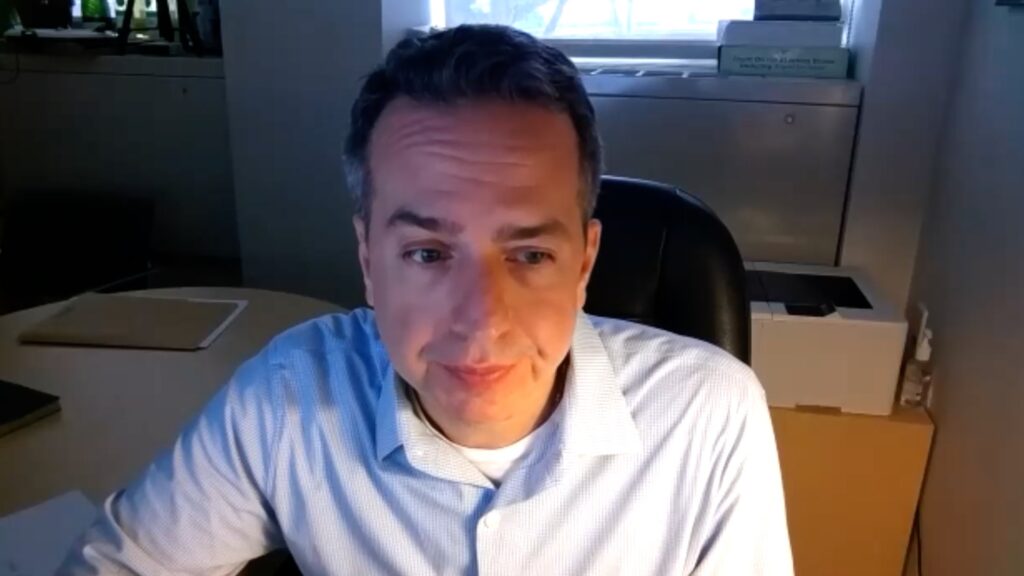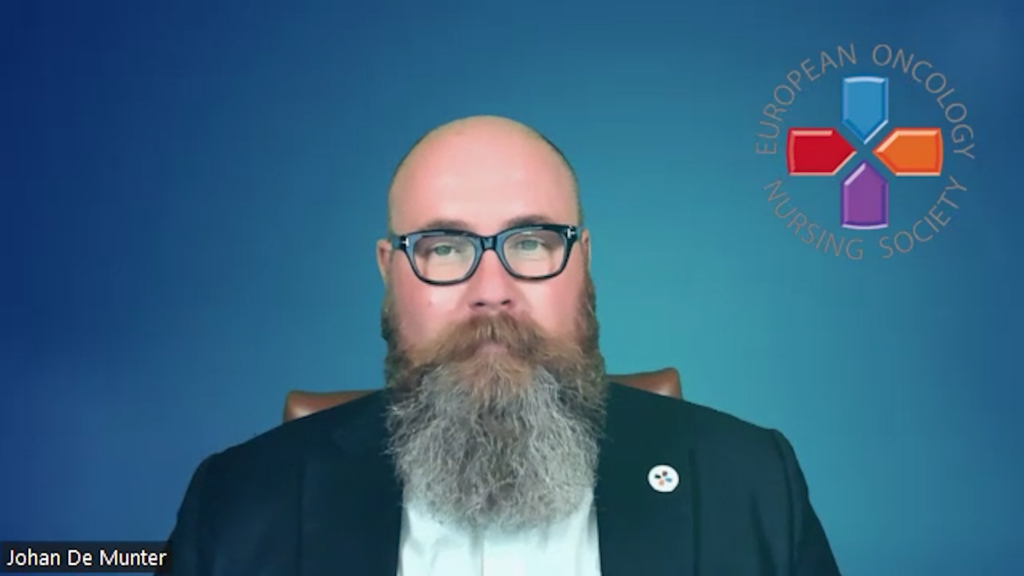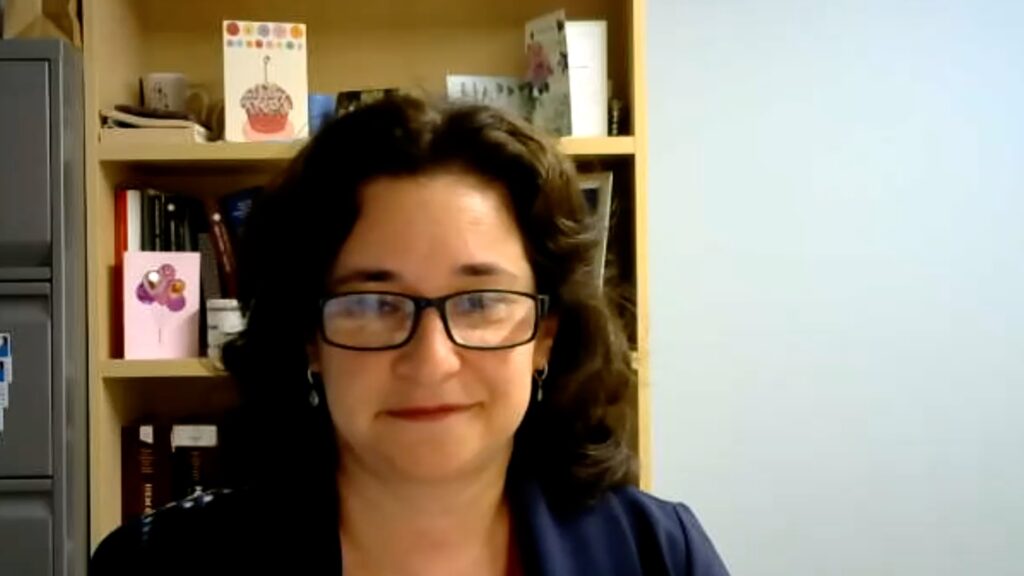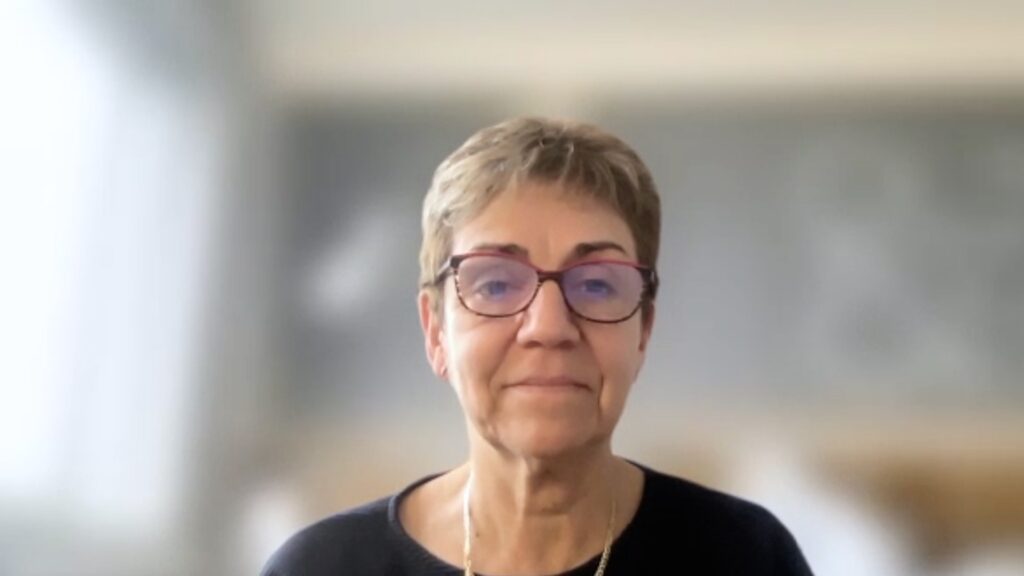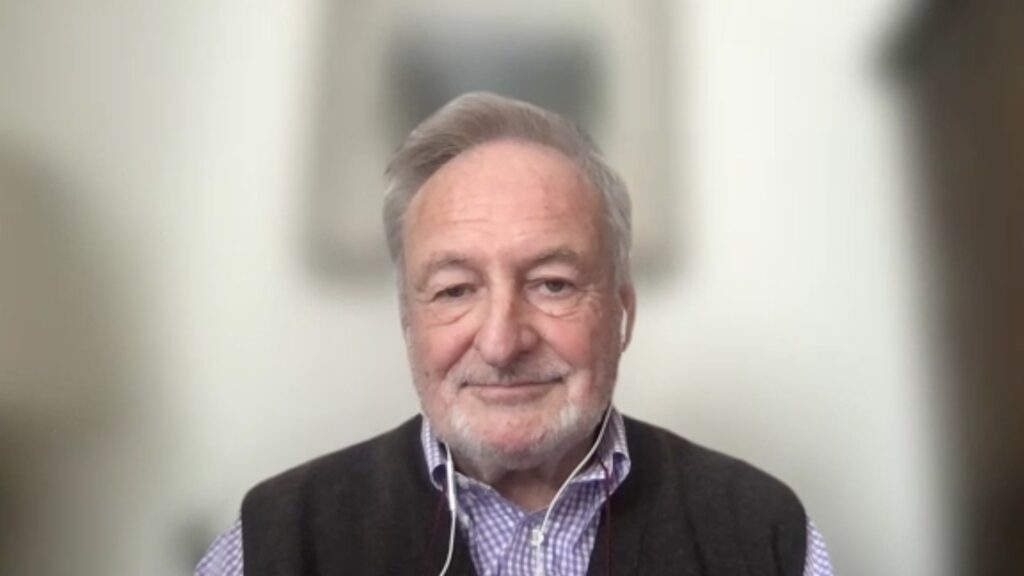TouchHAEMATOLOGY coverage of data presented at EBMT 2024:
Dr. Francesca Kinsella, a Consultant Haematologist and Director of the Cellular Therapy and Transplantation service at University Hospitals Birmingham, Birmingham, UK, contributed her expertise at the EBMT 2024 conference, chairing the oral session on advancements in Graft-versus-Host Disease (GVHD). GVHD is a major complication of allogeneic stem cell transplants, which can affect patients’ morbidity, mortality and quality of life.
Dr. Kinsella spoke with us to provide a critical analysis of both the effectiveness and challenges of current GVHD treatments as well as promising new approaches. During the interview, Dr. Kinsella emphasized the reliance on high-dose corticosteroids as a primary treatment, despite their severe side effects and potential ineffectiveness, highlighting the urgent need for alternative therapies. She also presented key findings from recent studies, including sustained positive responses from the ROCKstar study investigating belumosudil in chronic GVHD and promising results from part of the Early Access Program (EAP) in Europe which investigated early use of faecal microbiota transplants in acute GVHD cases. Furthermore, we also discussed the AGAVE-201 study which presented compelling data on axatilimab, showing its efficacy in treating fibrosis-affected organs, pointing towards more targeted treatment strategies. These insights from EBMT 2024 reflect the significant progress being made in the understanding and managing GVHD.
Questions:
- What are the common causes of GVHD and what impact does it have on patients’ lives?
- What are the current most effective treatment options for GVHD, and what are the primary challenges or limitations?
- What were the key findings from the studies presented at EBMT 2024 on GVHD therapy, and how might these insights affect future clinical practices?
Disclosures: Dr. Francesca Kinsella has received grant/research funding from Gilead, acted on an advisory board for Sanofi, Vertex and Incyte and received honoraria from Therakos and Sanofi.
This content has been developed independently by Touch Medical Media for touchHAEMATOLOGY and is not affiliated with the EBMT 50th Annual Meeting, 2024. Unapproved products or unapproved uses of approved products may be discussed by the faculty; these situations may reflect the approval status in one or more jurisdictions. No endorsement of unapproved products or unapproved uses is either made or implied by mention of these products or uses by Touch Medical Media or any sponsor. Views expressed are the speaker’s own and do not necessarily reflect the views of Touch Medical Media.
Associated abstracts:
Stephanie J Lee, Corey Cutler, Steven Pavletic et al. OS13-01 BELUMOSUDIL FOR CHRONIC GRAFT-VERSUS-HOST DISEASE AFTER ≥2 PRIOR LINES OF SYSTEMIC THERAPY: 3-YEAR FOLLOW-UP OF THE ROCKSTAR STUDY
Jose A. Perez-Simon, Zachariah DeFilipp, Stephanie J. Lee et al. OS13-06 AXATILIMAB FOR CHRONIC GRAFT-VERSUS-HOST DISEASE: RESPONSES IN FIBROSIS-DOMINANT ORGANS IN AGAVE-201
Florent Malard, Michael Loschi, Thomas Cluzeau et al. OS13-07 POOLED FECAL ALLOGENEIC MICROBIOTHERAPY FOR REFRACTORY GASTROINTESTINAL ACUTE GRAFT-VERSUS-HOST DISEASE : RESULTS FROM THE EARLY ACCESS PROGRAM IN EUROPE
Transcript:
My name is Francesca Kinsella. I’m a Consultant Haematologist and Director of the transplant service in Birmingham, UK.
Q1. What are the common causes of GVHD and what impact does it have on patients’ lives?
In terms of graft-versus-host disease (GVHD), it’s one of the most severe complications of an allogeneic stem cell transplant. Acute graft-versus-host disease arises following the initial inflammation and donor allogeneic immune response that occurs, and typically affects epithelial surfaces, so the skin, the GI tract and the liver.
In terms of chronic GVHD, this arises due to a failure to educate the de novo, the new immune system being generated by the stem cells. And therefore, a lack of tolerance can manifest much more like a traditional autoimmune multisystem condition.
It is very difficult to treat when severe and unresponsive to first line treatments, and both can have a devastating impact on patients morbidity, mortality and their quality of life.
Q2. What are the current most effective treatment options for GVHD, and what are the primary challenges or limitations?
In first line treatment for GVHD, both acute and chronic, unfortunately, we remain dependent upon corticosteroids at high doses.
So that may be one to two milligram per kilogram in the acute setting depending upon the severity and one milligram per kilogram in the main for chronic.
There is no evidence yet, unfortunately, to say that other adjunctive treatments could either be used in combination or instead of steroids.
And the challenges therefore include the side effects of prolonged use of corticosteroids because they have to be weaned over a particularly long time.
Unfortunately we also recognize that a significant proportion of patients may fail steroid treatments and need a second line, so that is a significant limitation.
And in that setting then, whatever agents we use, we are increasingly immunosuppressing patients and increasing their risks of infections and complications.
Q3. What were the key findings from the studies presented at EBMT 2024 on GVHD therapy, and how might these insights affect future clinical practices?
Certainly, it was an excellent session. I really enjoyed it. And, I think there were some key findings.
Belumosudil for GVHD: 3-year follow up ROCKStar study
Dr Corey Cutler, presented the three year outcome data from the ROCKstar study, which was the seminal phase II study looking at belumosudil at two doses for chronic GVHD in third line treatment.
He presented their ongoing responses which were equivalent to the outcome seen in the initial descriptor in the study. So looking initially in that study at a median, duration of response to 54 weeks, that seems to be borne out over a three year follow-up.
Fascinating and encouraging to see that response line plateau to suggest that those responses are sustained and, also, whilst it wasn’t presented, the discussion went on to elicit that, apparently, those responses are being seen across the organs that respond as well.
So I think that is potentially a very key finding given that belumosudil is now available in England for the treatment of chronic GVHD third line.
Faecal allogeneic microbiotherapy: Results from the Early Access Programme (EAP) in Europe
A second study, that I thought was very interesting but that may not quite yet impact upon clinical practice in the UK was work presented by Prof. Florent Malard who showed the real world data from France’s experience of delivering a faecal microbiota transplant as an enema form for patients who have steroid-refractory, acute, gut GVHD and many of those patients were indeed refractory to ruxolitinib, which is considered now the international standard-of-care for that problem. They showed significant improvement in symptoms and responses.
Like I said, this is not likely to change our practice just yet, but it is really encouraging, in what is a significant unmet need for this group of patients.
Axatilimab for chronic GVHD: AGAVE-201 study
I think the third study to mention is the outlining from the AGAVE-201 study presented by Prof. Perez-Simon about the organ specific responses to axatilimab, which is the CSF-IR (Colony-stimulating factor 1 receptor) monoclonal antibody, recently trialled and presented earlier on in the year at ASH.
Whilst that showed very favourable outcomes for patients with chronic GVHD in the third line setting, what was presented was evidence to show that the organ responses had a proclivity for organs affected with fibrosis, particularly the GI tract.
Interestingly, only 27 percent of patients with skin manifestations demonstrated a response, which probably highlights the difficulty we have in this patient cohort particularly late out, demonstrating responses with the NIH consensus criteria. This is highly encouraging, in terms of eliciting responses in a group of patients that were very heavily pre-treated, including patients who had received both ruxolitinib and belumosudil, and gives us some hope for extra lines of treatment for these patients in the future.
Interviewer/Editor: Gina Furnival
Cite: Kinsella F. Emerging treatment strategies in GVHD. touchHAEMATOLOGY, May 13 2024.

